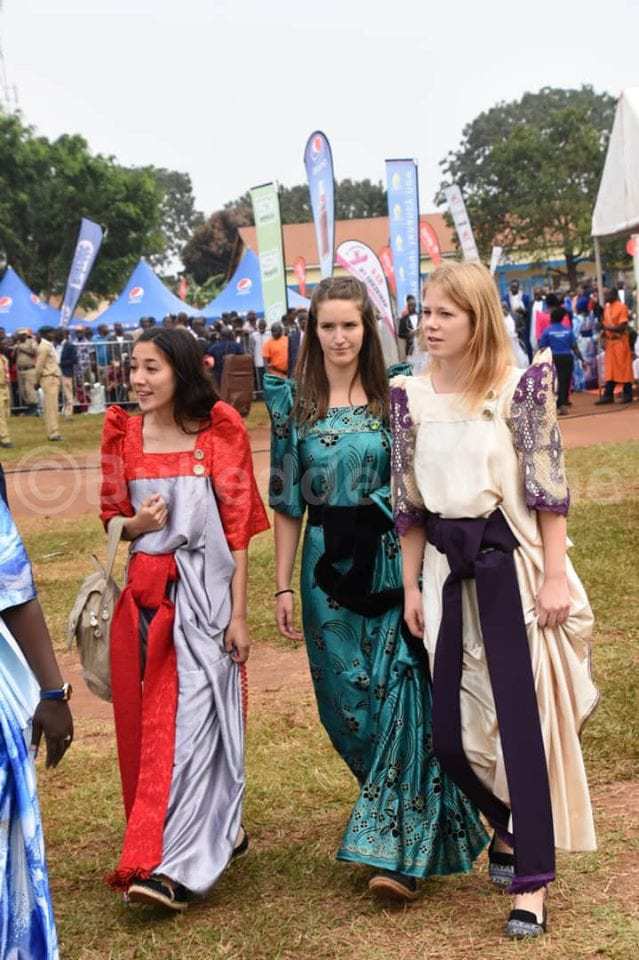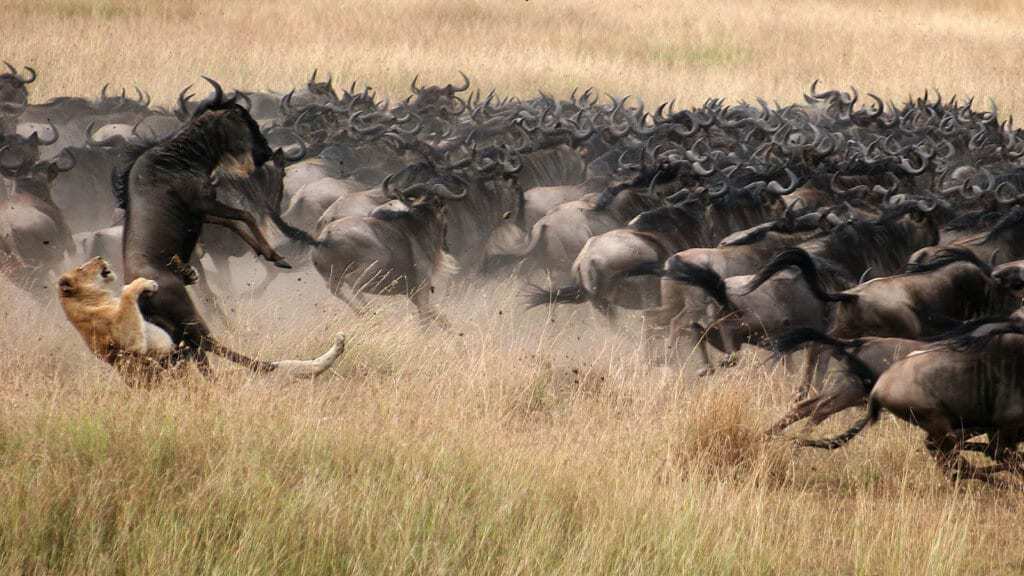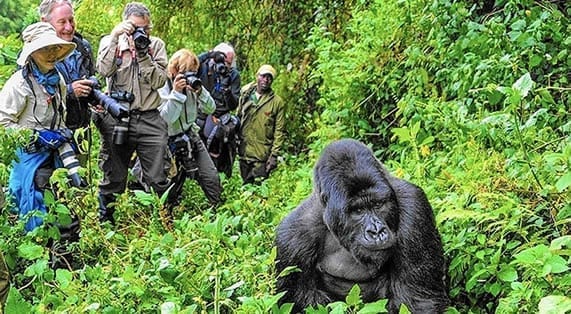East Africa is home to the Big 5, the mighty wildebeest migrations between Serengeti and Masai Mara, white sand beaches, rich nightlife, and an overwhelming cultural experience. But that’s just a drop in the ocean compared to what East Africa has to offer tourists. Let’s whet your travel appetite with our comprehensive list of the top 10 activities to do in East Africa.
Kenya, Uganda, and Tanzania have been rated top tourist destinations on several occasions consecutively by some of the world’s top travel guides like CNN Travel, Lonely Planet, Safari Bookings, and others.
This is surely a signal that this can’t just be hype but a sincere observation from different tour bloggers and specialists. And this isn’t just because East Africa is a haven to the world’s most endangered species or the biggest number of the Big 5. But it’s because East Africa has tourism treasure that is still hidden and hasn’t been discovered by most tourists yet. In fact, we are confident in saying: there will always be something new to discover in East Africa – even by tourism nomads.
East Africa’s tourism sector hasn’t yet been developed. In fact, most of her governments are just waking to develop the tourism sector after realizing it’s potential from tourism developed countries like South Africa. This, therefore, gives tourists visiting East Africa an opportunity to experience first-hand discoveries as they happen.
Here are the top 8 activities to do in Uganda, Kenya, Tanzania, Rwanda and the rest of the East African region
We’ll start off this list with activities that most travel agencies ignore – but we feel are a more representation of what East Africa truly is. However, these activities are in no particular order of importance. Plus, they can be arranged in any East African country of your choice.
Let’s dive right into it;
1. Attend an African customary wedding – Any of the E. African countries
 Tourists wearing gomesi (Buganda traditional attire) attend the Kabaka’s (King of Buganda) 26th ceremony. Photo by Bukedde[/caption]
Tourists wearing gomesi (Buganda traditional attire) attend the Kabaka’s (King of Buganda) 26th ceremony. Photo by Bukedde[/caption]
Tanzania has about 120 tribes and 125 ethnic groups, Uganda has about 56 tribes, Kenya has 44 and Rwanda (with the smallest population) has 3. That makes a total of 223 different tribes – and we haven’t included Burundi, S.Sudan and DR. Congo.
However, you have to understand that each tribe has different cultural and marriage norms: each has different music, attire, food, and so much more.
Africa is a haven for culture and cultural African weddings are action-packed with various cultural practices and norms. If you want to experience culture first hand, a wedding could be your first and last stop. From food to clothes, gifts, dance, and various cultural activities, you will be blown away by what constitutes a true African wedding.
2. Prepare a local meal- Any of the E. African countries
Get your apron on and immerse your taste buds in an endless taste fest of over 2300 different East African dishes and recipes. But you actually, won’t just be tasting, you will be getting your hands wet and busy preparing the dishes yourself. But first, you’ll have to wake up early in the morning, head to a local market and shop the foods you’ll be preparing.
As I mentioned above, only 4 of the 10 East African countries make a total of 223 tribes and each tribe has about 5 traditional foods that are prepared differently from the other. Sample local flavors and take home new skills with hands-on cooking classes by local culinary experts.
3. Experience East African towns and slums as a local –
Any of the E. African countries
A locally born guide takes you on a day tour around a town they’ve grown up from. This is one of the most important tours tourists visiting any country should take on because it is a knowledge hub into that country’s history and present. See a country through history and culture, music, dance, and interactions with the locals.
4. Coffee: From seedling to roasting and to your cup –
Any of the E. African countries
Coffee, the world’s most loved drink, was first discovered in East Africa– Ethiopia in particular. And although Ethiopia has a rich coffee history, Uganda and Kenya also grow and export millions of tones of coffee. In fact, Uganda is the 8th biggest coffee grower worldwide (Uganda produced 634,931,000 pounds of coffee in 2016.)
While Uganda may not come to mind when you think of coffee production, it is Africa’s second-biggest coffee grower next to Ethiopia. Between 2017-2018, Uganda produced 288,000 metric tons produced in 2016 with an increase of 2.5% was reported in 2017.
It moved past Mexico in 2015 to become the world’s 8th largest producer of coffee. The nation grows both Robusta beans – a crop native to the Kibale forest area – as well as Arabica beans from nearby Ethiopia. Coffee is a vital part of the Ugandan economy, with a large portion of the population working in coffee-related industries. The Ugandan Coffee authorities estimate that over 500,000 Ugandans depend on coffee for their livelihood.
Spend a day with a coffee farmer and processor and experience every detail that goes into coffee planting and processing – discover what it takes to make a cup of coffee as you journey through the scenic views the coffee farm has to offer. From the seedling bed to the fermentation tanks, drying beds, the mill, the roasting of the coffee beans, and to the first sip as you learn the long history of coffee in East Africa.
5. Rafting at the source of River Nile (The disputed word’s longest river) – Uganda
 Up until this point, you’ve been lazing around but that’s now behind us! Now it’s time to physical and sweaty!
Up until this point, you’ve been lazing around but that’s now behind us! Now it’s time to physical and sweaty!
And today, your adrenaline levels will shoot up as you fight against the rugged waters of the mighty Nile – or other various rivers that East Africa is blessed with.
This activity isn’t just about rafting because prior to that, you will have visited the source of the Nile town, Jinja- an adventurous town; the Speke Monument – a pillar commemorating where the British explorer first laid claim to the historic source of the Nile in 1858; you’ll go bungee jumping, Kayaking, boat riding as well as fishing – catch a live fish and cook it.
6. Meet the endangered mountain gorillas – Uganda and Rwanda
Next, is a close up with these endangered primate cousins whose DNA is 98% similar to humans. Mountain gorillas -Once on the verge of extinction, their survival is one of Africa’s greatest conservation success stories. – can only be found in 3 countries: Uganda, Rwanda, and Congo. Mountain gorillas habitats are divided into 2 groups.
One population lives in Uganda’s Bwindi Impenetrable National Park, and the other in the Virunga Mountains in three adjacent national parks, namely Uganda’s Mgahinga Gorilla National Park, Rwanda’s Volcanoes National Park, and Virunga National Park in the Democratic Republic of Congo
However, the biggest number is found in Uganda’s Bwindi impenetrable national park and it provides a fascinating insight into one of the world’s most endangered animals.
Bwindi is called the Impenetrable Forest for good reason: a dense smoky jungle spanning 321 sq km with tangled vines and vegetation sprawled across steep muddy terrain.
 The thick smoky Bwindi forest is a perfect habitat for the mountain gorillas[/caption]
The thick smoky Bwindi forest is a perfect habitat for the mountain gorillas[/caption]
Only eight people are allowed to track each gorilla family, staying for just one single hour in their presence. Rules also state that visitors should never proceed to within 7m of the giant apes, but occasionally the gorillas will cross the line and approach you to almost stroking distance. However, they are not dangerous unless provoked.
Uganda’s gorilla permits go for $600 per person while those of Rwanda cost $1500 per person per hour. Uganda offers an even exciting deal where one can get 4 hours of gorilla tracking at $1500 (The Gorilla Habituation Experience).
7. Follow millions of wildebeests migrate between The Serengeti and Masai Mara, along with their predators – Tanzania and Kenya
 The wildebeest migration is the peak of a safari experience. There’s nothing as spectacular as watching millions of huge wild animals run in unison from one area to another in search of food and water. But it’s not just the wildebeest migrating, they are also accompanied by large numbers of zebra, and smaller numbers of Grant’s gazelle, Thomson’s gazelle, eland, and impala. And this precisely means predators are following along. This treacherous 3000-kilometer journey is dictated by the seasons and where the rains are, the wildebeest are not far behind.
The wildebeest migration is the peak of a safari experience. There’s nothing as spectacular as watching millions of huge wild animals run in unison from one area to another in search of food and water. But it’s not just the wildebeest migrating, they are also accompanied by large numbers of zebra, and smaller numbers of Grant’s gazelle, Thomson’s gazelle, eland, and impala. And this precisely means predators are following along. This treacherous 3000-kilometer journey is dictated by the seasons and where the rains are, the wildebeest are not far behind.
Particularly, a documented rivalry of 3 different prides of lions that have fiercely fought for the control and right to the wildebeest herds for decades. And it’s not just the lions that follow the herds: leopards, cheetahs, hyenas, and others are following along.
8. Ngorongoro Crater – Tanzania
There are few places that have wildlife densities and variety on this level. It is not unusual to see the Big Five in one day in Ngorongoro. Additionally, Ngorongoro has the following advantages; wildlife viewing all year round, the Black rhino is easily seen, Excellent mid-range and luxury lodges on the crater rim – although more crowded and expensive, Cultural visit to a Masai village.
If you want any of these experiences or want a package that offers all the activities, get in touch with us by email or telephone.



